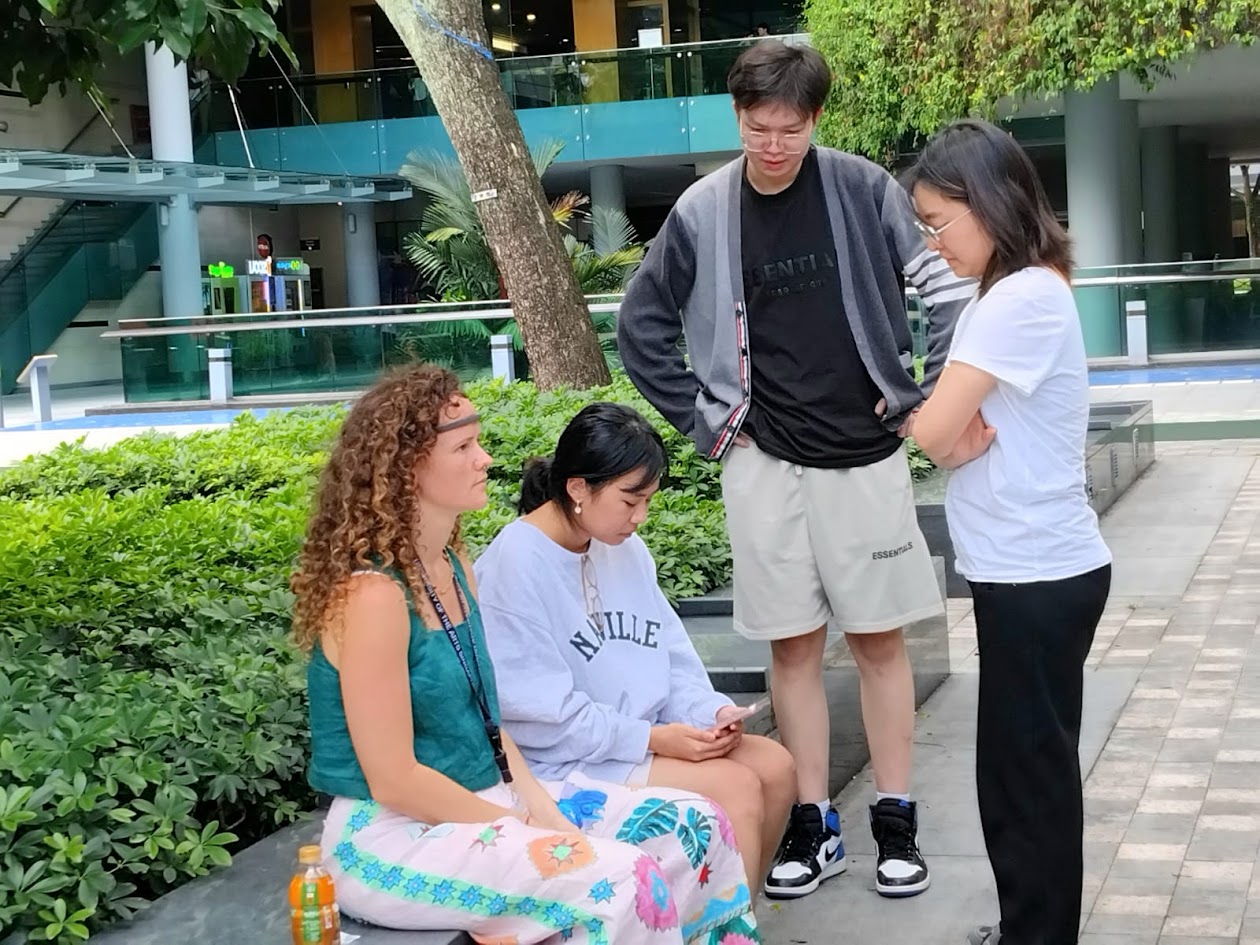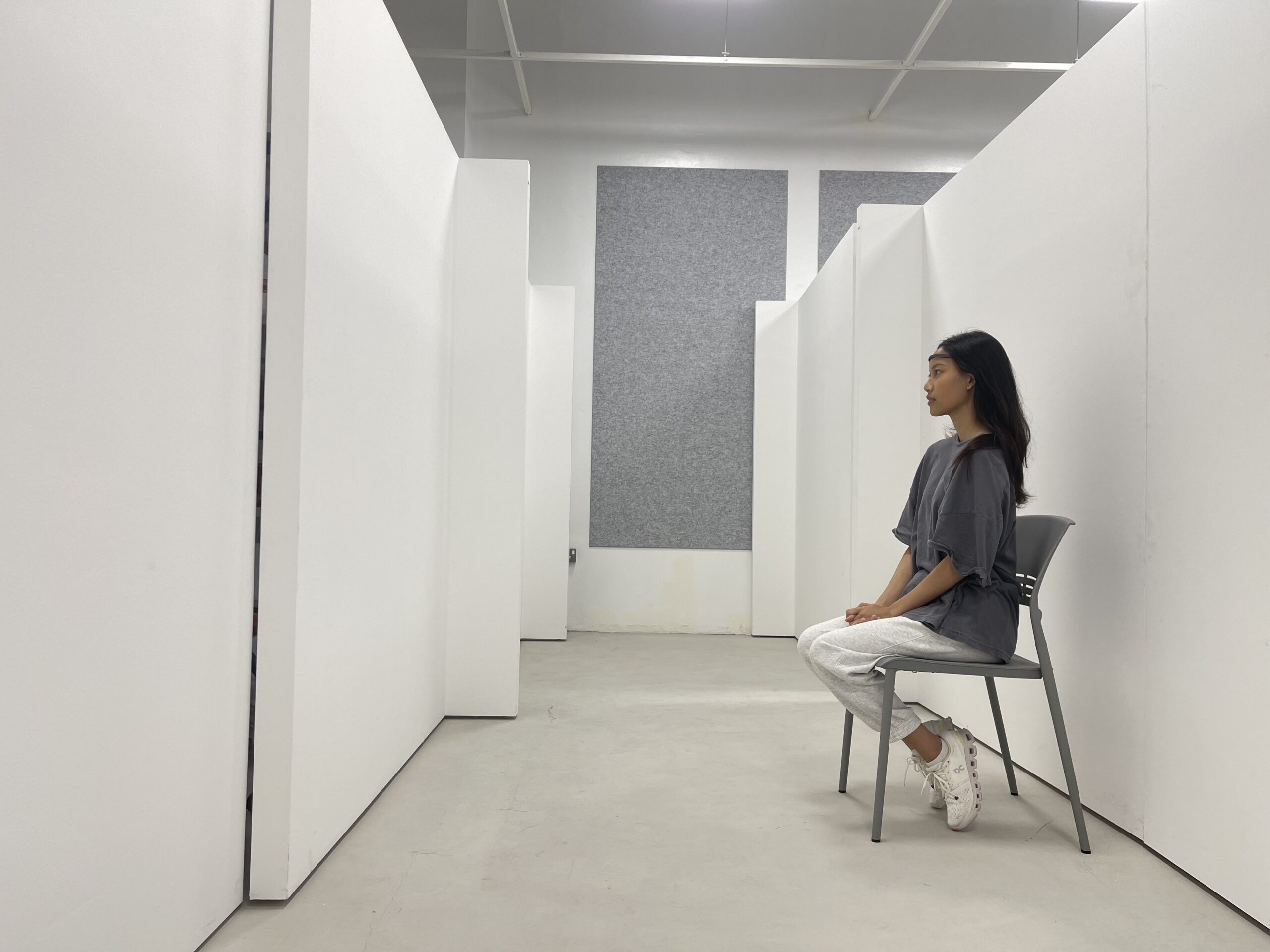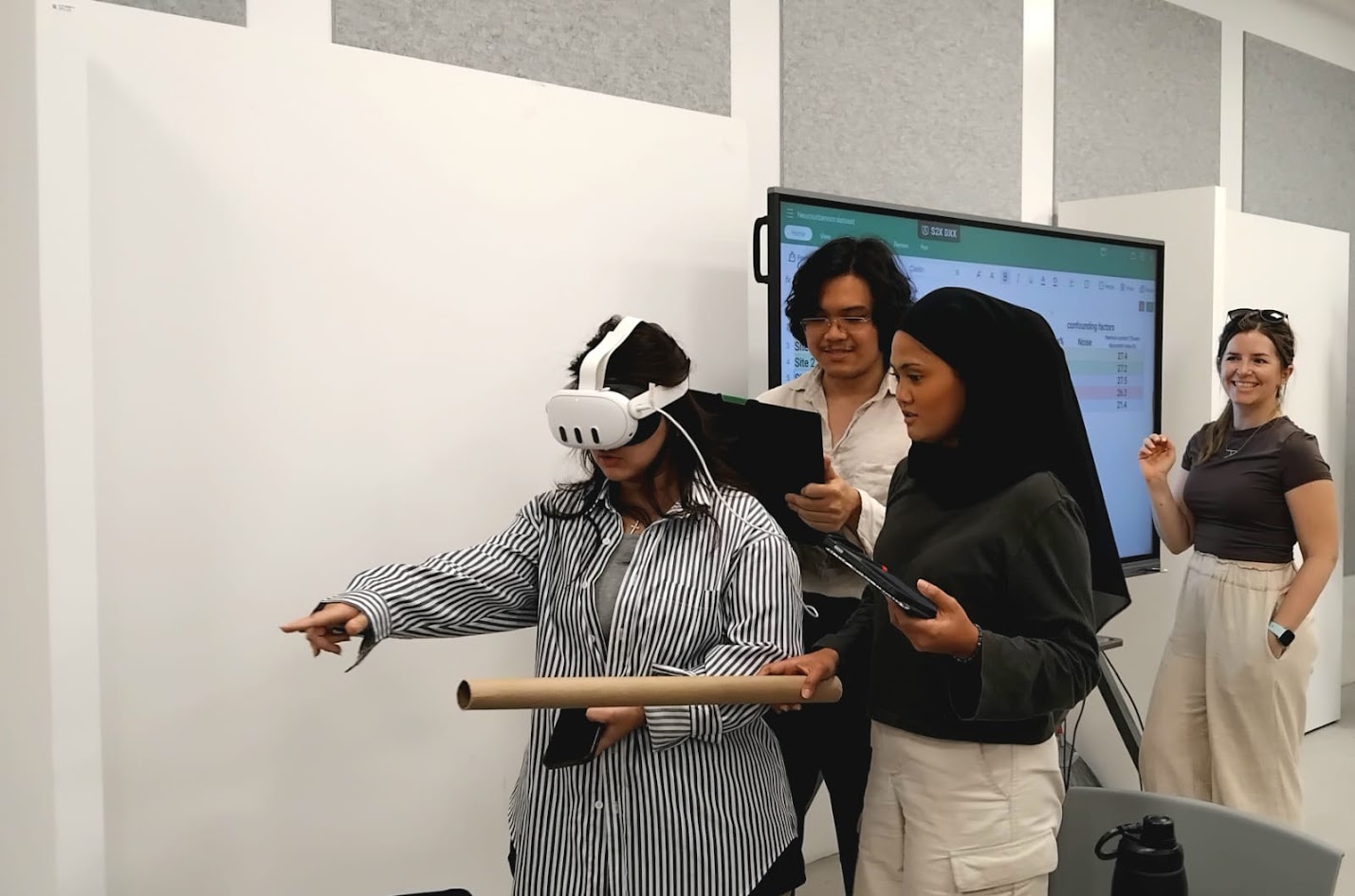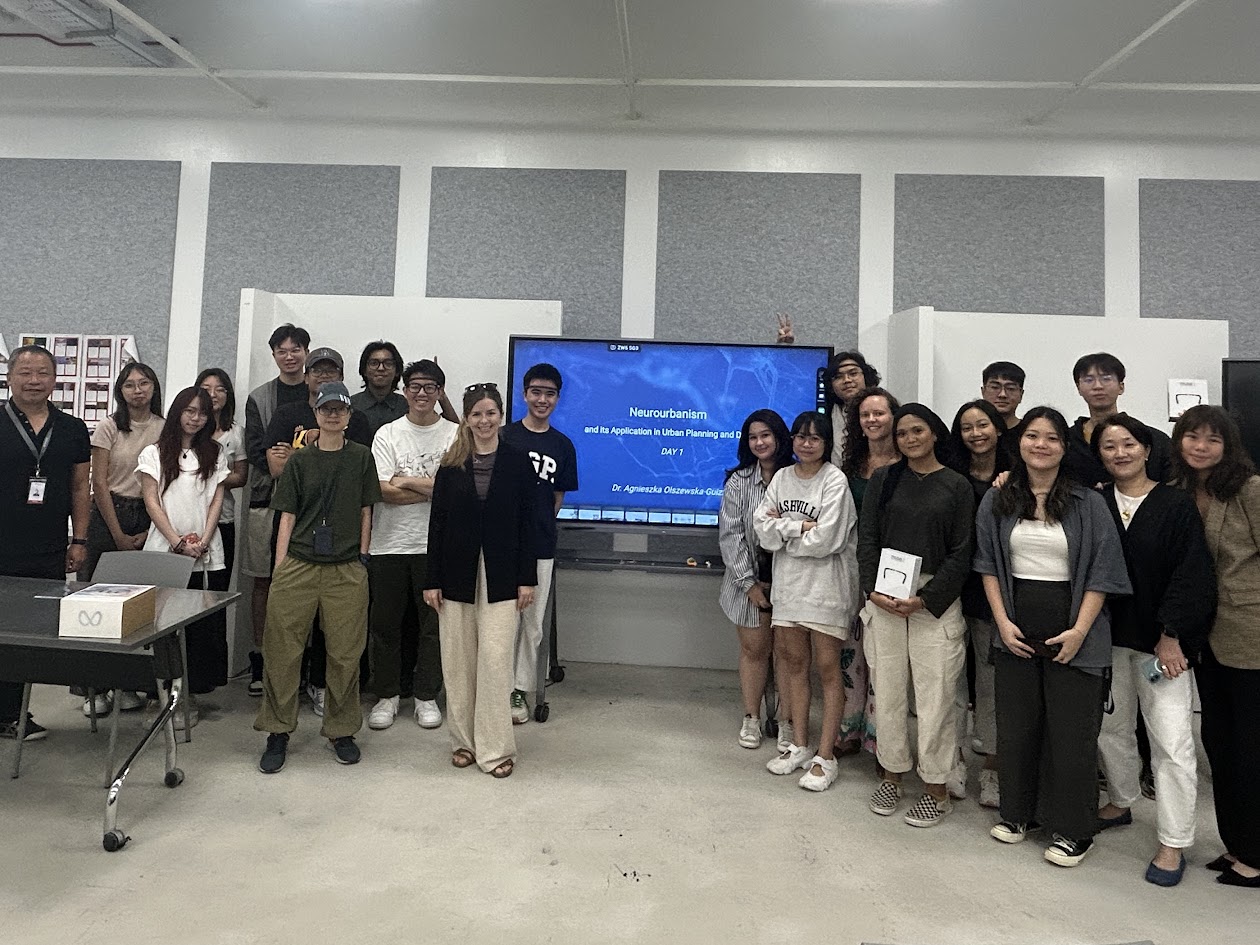On February 25-26, 2025, a group of Biophilic Design students of NAFA, gathered for an immersive workshop titled "Neurourbanism and its Application in Urban Planning and Design," led by Dr. Agnieszka Olszewska-Guizzo. This two-day event blended theory and practice, offering participants a unique opportunity to explore how brainwave data can inform urban design.
Day 1: Theory and Fieldwork
The workshop began with an introduction to neurourbanism—a field that bridges neuroscience and urban studies—followed by a deep dive into mobile electroencephalography (mEEG) as a tool for assessing urban environments. Participants learned how brainwave measurements can reveal human responses to different spaces.
In the afternoon, students split into five groups, each equipped with a Muse II m-EEG device and an environment meter. Their task? Record brain activity in two conditions (seated and walking) across different sites, comparing them to a controlled environment. By the end of the day, each group had collected:
-
EEG scans from control and assigned sites
-
Environmental metrics (noise, humidity, temperature)
-
Site maps, photos, and first-person walking videos


Day 2: Data Analysis and Insights
The second day focused on data visualization and interpretation. Groups analyzed their EEG recordings, comparing brain activity in urban settings versus the control environment. In the afternoon, each team presented their findings, covering:
-
Site characteristics and environmental factors
-
EEG results (differences between sites and control)
-
Design implications for urban spaces
The workshop concluded with a lively discussion on how neurourbanism can shape future cities, emphasizing the importance of human-centered design.



